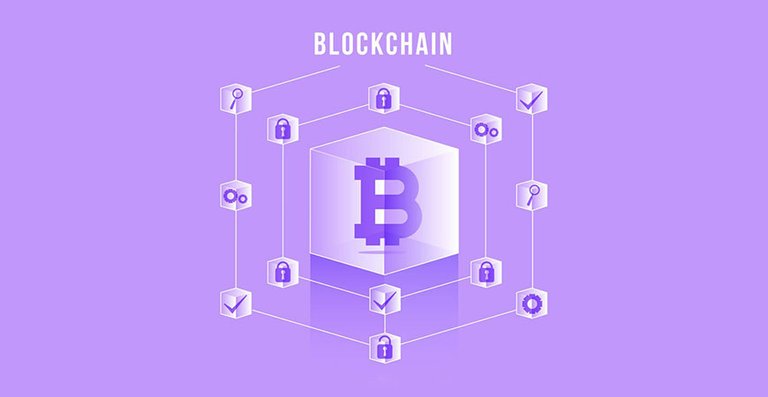Understanding Layer-0 Blockchain
Layer 0 is the foundation for all layers in a blockchain network, i.e., the first layer of any blockchain protocol that ties up all other protocols together as part of interconnected value chains and offers a more secure replacement for smart contracts. It is the sub-layer below all other layers, which facilitates their operation and interaction with each other. It entails the basic protocols, consensus algorithm, as well as data structures which make up the whole blockchain framework. The layer differs with others since it focuses on developing the basic architectural designs for the network as it concerns the protocols governing its functionality.
Understanding how Layer 0 Works
Various different mechanisms characterize layer 0 protocols operation. They are distinct in their designs, functions, and focus. Nevertheless, Layer 0 protocols constitute the main and primary chainblock, functioning as a backup for the transactional data of diverse Layer 1 chains. There are also inter-chain systems that allow for the transport of tokens and data across different blockchains.
Layer 0 consists of a set of state channels where users define conditions for accepting or rejecting transactions data. The network layer is another essential part of the OSI model that supports servers, hardware, systems, nodes, and devices that are connected to these nodes. It supports multiples consensus algorithms and P2P systems such as proof-of-work (pow), proof-of-stake (pos), proof of activity, proof of reputable observes, directed acyclic graph (dag) and others for optimal network topology. Layer 0 together with these three important pillars, namely scalability, neutrality, and flexibility enhances security in the blockchain and also the privacy of transactions that occur.
The native tokens function as the main consensus layer by offering economic rewards to encourage participants to support and manage the whole infrastructure in the HGTP network, thus ensuring that everybody benefits from their contributions equally.
Characteristics of layer 0 blockchains.
Layer 0 blockchains serve as a basement offering security, scalability, and interoperability upon which the transformative and powerful blockchain technology rests. Blockchain technology powerful and revolutionary. The main distinguishing features of Layer 0 blockchains are as follows:
Scalability and Interoperability
Scalability has been one of the significant hurdles that most of the first blockchain systems like bitcoin have faced. With growing transaction volumes, these networks experience congestion, leading to high fees. This calls for novel layer 0 blockchain scalability approaches. For example, sharding as a method of partitioning the network into smaller fragments facilitates parallel processing of transactions and boosts throughput considerably.
Additionally, Layer 0 fosters greater inter-blockchain communication and interoperation. In fact, over time, blockchains used to be siloed restricting them to interact or exchange information smoothly. Cross-chain bridges and interoperability frameworks act in a similar way but are layer 0 protocols which connect different distributed ledgers so they can communicate through sharing data and assets. With this interoperability, possibilities emerge into cross-chain applications, DeFi, chain supply management, providing for joint work and innovation on a worldwide level.
Security and Consensus Mechanisms
Blockchains rely on Layer 0 for safety and dependability. Through developing strong consensus procedures, Layer 0 protocols create an atmosphere of trustlessness among its participants, eliminating any reliance on a centralized institution in transactions and communication. In this regard, consensus mechanisms like PoS or DPoS use the economic incentives of different participants of the network to protect its blocks against manipulation attempts.
Advanced encryption methods for the protection of information and transactions in layer 0 as well. In layer-0 blockchain, some of the measures used to ensure security and protect the privacy of users include encryption, digital signatures, and zero-knowledge proofs. These are among the major security measures that protect the infrastructure of the network, promoting trustfulness in its users as well as the acceptance of distributed networks.
Example Of Famous Layer-0 Blockchain Architecture
Polkadot (DOT)
Gavin Wood, one of the co-founders of Ethereum, developed Polkadot as a way for developers to develop their own blockchains. Each blockchain built off of Polkadot is called a parallel chain, or also a parachain. This is called the relay chain, which makes the process of communicating the data among different parachains effective. It uses such mechanism as sharding that is one of the effective methods applied to process transactions on blockchains or other types of databases more efficiently. Polkadot, a proof-of-stake (PoS) approach, validates network security and consensus. In the auction process, projects that wish to build on Polkdot bid for different spaces available. The first parachain project of Polkadot was allowed in a December 2021 auction.
Cosmos (ATOM)
It was created in the year 2014 by Ethan Buchman and Jae Kwon while they worked on The Cosmos Network. Composed of a Cosmos-Hub PoS Blockchain mainnet, and Zones tailored chain-of-blocks. This hub is used to transfer assets and information as well share a security framework among connected zones. Every Zone is very customizable such that it helps developers create a unique currency or Bitcoin which has customized features for block validation and others. All applications and services in these Zones are communicated using IBC protocol. This allows assets and data to be transferred between separate blockchains.
In conclusion
Indeed, layer 0 blockchain is a major step into the future of distributed systems. This novel strategy takes into consideration the basis aspect which includes scalability and interoperability aspects needed in various sectors thereby creating countless chances for blockchain acceptance into other enterprises. With time, we may soon see yet another wave of new applications which will drastically change how businesses operate while improving data governance and security. Adopting layer 0 is accepting decentralised development of the future.



https://inleo.io/threads/wealthwess/re-wealthwess-2czfvaeac
The rewards earned on this comment will go directly to the people ( wealthwess ) sharing the post on LeoThreads,LikeTu,dBuzz.
Yay! 🤗
Your content has been boosted with Ecency Points, by @wealthwess.
Use Ecency daily to boost your growth on platform!
Support Ecency
Vote for new Proposal
Delegate HP and earn more